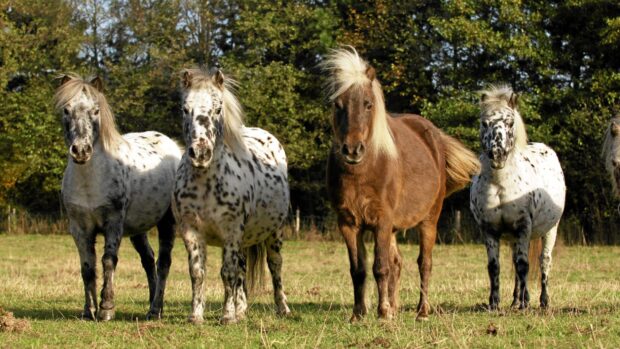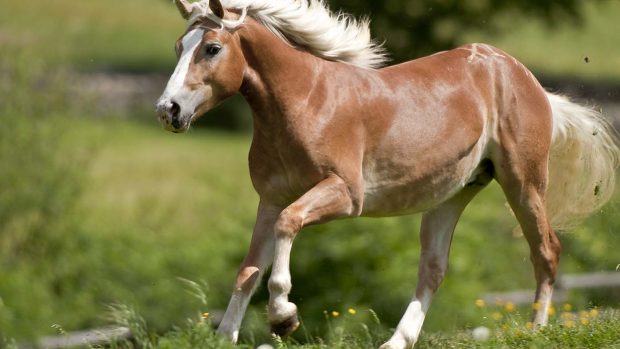When we talk Great British heavy horses, we often land on the Shire or Clydesdale first – but what about the Suffolk Horse?
The Suffolk Horse, historically known as the Suffolk Punch, is one of the UK’s four native species of heavy horse bred for draught work. They replaced oxen in the UK primarily because they are easier to shoe and can work in a collar, which is more efficient than a yoke for pulling. Suffolks ploughed and drilled the land, and undertook forestry work.
An icon of the county of Suffolk, these gentle giants played a vital role in our agricultural and military history. In the nineteenth and early twentieth century, you’d have seen them everywhere. Today, though, the Suffolk Horse numbers fewer than 500 in the UK.
Not only due to their scarcity, these sturdy equines are also special due to their very own colour terminology. Indeed, you must always refer to Suffolks as ‘chesnut’, without the ‘t’, because this is the traditional regional spelling of the word.
History at a glance
It’s said there have been heavy horses in Suffolk since the 16th century. The Suffolk Horse Society was founded in 1877 and the first studbook published in 1800. All studbook horses can trace their male lines back to one stallion, ‘Crisp’s Horse of Ufford’, who foaled in 1768.
The East Anglian counties of Suffolk and Norfolk both have a coastline and much of the land is flat, fertile and used in growing cereals. Suffolk horses were therefore highly valuable – and sought after – for farming the land. As such, many Suffolks were bred in the early to mid nineteenth century to meet demand. Some even went to the continent lend their talents to agricultural operations in mainland Europe.
Their strength, endurance and willingness to work were all traits that didn’t just make Suffolks excellent working farm animals. Undoubtedly, these qualities also made them standout candidates for pulling First World War artillery. On 13 August 1914, one division of the cavalry sent some 25,000 horses to France to help the war effort – no doubt many came from East Anglian farms. The army requisitioned some 120,000 horses from civilians in the first week of the conflict. Only those essential to farming operations remained in their homes.
The Great War depleted Suffolk numbers, but the 1940s and the rise of mechanised agriculture spelled disaster for the breed. As tractors were employed on the land, hedgerows removed and fields made larger, the population suffered a rapid decline. Sadly, many went to the meat market and fewer and fewer foals appeared – the society registered only nine Suffolk foals in 1966.

A group of Suffolk Punch heavy horses standing in field. Credit: Alamy Stock Photo
Conformation of the Suffolk Horse
Height: At maturity, the Suffolk generally ranges between 15.3–17hh, though there are instances of horses exceeding 17hh.
Colour: a Suffolk can only be chesnut (with one ‘t’), and the breed society will accept liver, dark, red, light or bright chesnut. A certain amount of white face markings, such as a star, is acceptable. In addition, they can have a scattering of silver or white hairs on the body. The breed society does not accept stallions with white leg hair for breeding.
Head and neck: A large yet elegant head with a broad forehead with well set, bright eyes. The neck should be deep in collar and taper up gracefully to the setting of the head.
Limbs: Short in proportion to body with big flat knees and long clean hocks. Short canon bones. Minimal hair allowed at the heels.
Body: Long, muscular shoulders, broad in front with a wide, level back that has a graceful outline. Girth in proportion and deep round ribbed from shoulder to flank.
The Suffolk Horse today
These days, breed conservation efforts have sprung into action to help protect, promote and increase numbers of the breed. The Rare Breeds Survival Trust list the Suffolk as a ‘priority equine’, plus there is an active community of Suffolk owners and breeders in the UK. The Suffolk Horse Society registered 32 foals in 2020.
Although Suffolks continue employment in some heritage land and conservation work, diversification of use continues to improve their popularity. The breed is gaining traction in the show ring, with four-year-old Suffolk mare Holbeache Scarlet taking the 2023 Search For A Star Championship at Your Horse Live.
The Suffolk Horse: An enthusiast’s view
Sam Maloy has two Suffolks of her own – a three-year-old gelding called Ashmead Red Romeo and his dam, 14-year-old Whatton Gertrude, who is in foal to stallion Whiterode Phoenix.
“Temperament wise, both my Suffolks are loving, and adore people,” says Sam. “Gerty is more of a homebody, preferring to stay at home than go to shows. She is a kind mare but can worry if she’s somewhere new without me.
“Romeo is more outgoing than his dam, and enjoys shows more. He doesn’t worry about the big shows, enjoys exploring new places with me.”

Sam Maloy’s Whatton Gertrude, due to foal in May 2025. Credit: Sam Maloy
Sam drives both horses and backed Gerty herself. She competes in Ridden Heavy Horse classes at county shows and qualified for Equifest in 2018.
While Sam describes her Suffolks as softies who love attention and love to please, they shouldn’t be underestimated.
“They aren’t always for everyone,” she continues, “and in the wrong hands (like any breed) can be a bit much. They require firm, kind and consistent handling to bring the best out in them.
“I definitely prefer my Suffolks over my daft, reactive warmblood gelding.”
More than just “gentle giants”
Claire Bartram, who’s based on the Lincolnshire/Norfolk border, owns three Suffolks of her own. She works with nine others at Tommyshop Farm near King’s Lynn.
“We do a bit of everything,” she tells H&H. “We’ve got a couple that enter the ridden classes, showing, displays, driving – we just started two pairs ploughing at the back of last year. They go in agricultural vehicles to maintain a bit of the grazing at the farm, and we’ve horse-drawn fertilisers.”
Claire keeps the horses fit under saddle mostly – with so many to work, it’s more efficient than harnessing up and driving every day.
“They’re a lovely, active ride and really enjoyable. We err on the side of caution and keep them fit through a lot of walk and trot. In my opinion, they’re not made for a lot of canter work. They’re very short in the pastern and they’ve got a tonne coming down their feet each step. It’s about being aware of their size, weight and fitness level.”

Claire’s charge Whatton Jasmine in the Ridden Final at Equifest 2023. Credit: Claire Bartram.
An important thing about the Suffolk horse is that their size and nature shouldn’t be underestimated.
“They’re clever,” continues Claire, “and once they learn something they don’t forget it — that can be good or bad.
“The worst phrase for me is ‘gentle giants’. They’re well aware of their size and they’re not low energy. I think they’re spicier than the other heavy breeds.”
As a traditionalist, Claire shows the Suffolks with the mane and tail braided in with raffia, with the tail folded up. She puts tulip flights in the mane, always an odd number.
“We can get the mane and tail done in about 25 minutes each now,” she says. “But I will say, it used to take me over an hour!”
You may also be interested in…

‘What a result for the breed’: Suffolk Punch mare lifts SEIB Search For A Star championship

The hearty Haflinger: blond and beautiful with ability to match

The flashy Fjord: combining the prehistoric with a modern workhorse

Subscribe to Horse & Hound magazine today – and enjoy unlimited website access all year round
Horse & Hound magazine, out every Thursday, is packed with all the latest news and reports, as well as interviews, specials, nostalgia, vet and training advice. Subscribe today and enjoy the magazine delivered to your door every week, plus unlimited website access and digital versions of the magazine dating back to September 2012.





